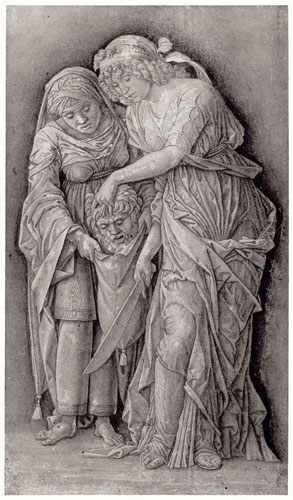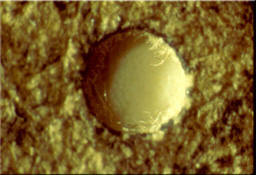 |
|
Judith with the
Head of Holofernes, overall |
|
 |
|
|
|
Formerly attributed to Andrea
Mantegna, Judith with the Head of Holofernes, ink
and white heightening on prepared paper.
This drawing first aroused suspicion on stylistic
grounds and was sent to the conservation lab at the
National Gallery of Art by Renaissance scholar Diane
DeGrazia, who was then a curator at the NGA. The
drawing was submitted to a battery of non-invasive
analytical techniques, including x-ray fluorescence.
Testing revealed the presence of anomalous materials
such as Mars black, an iron-based pigment
unavailable in Mantegna's day. However, such
materials could not be discounted as later
additions.
The drawing had been lined overall with lightweight
canvas which prevented a thorough examination of the
paper. Close inspection of the wormhole provided
the final bit of evidential weight. The hole
continued through the paper and the canvas backing.
The edges of the hole turned slightly downward,
suggesting that the hole, rather than having been
eaten into the sheet, had been created using a
punch. Slight amounts of drawing medium were
deposited on the inner edges of the hole, raising
further questions regarding the sequence of
creation, damage and restoration.
This may be the case when issues of authenticity
arise. It is often not possible to find the
so-called smoking gun. Sometimes things just don=t
add up and when enough things fail to add up their
preponderance may result in the artwork being
described as problematic. |
| Photo Credits: National
Gallery of Art, Washington, D.C. |
|